#wood warbler
Text

Collared Whitestart aka Collared Redstart (Myioborus torquatus), male, family Parulidae, order Passeriformes, found in Costa Rica and Panama
photograph by @ignacio_yufera
#redstart#whitestart#myioborus#parulidae#passeriformes#wood warbler#bird#ornithology#animals#nature#central america
684 notes
·
View notes
Text


This year I did not intend to find all the Zilpzalp-like birds, but I did.

Waldlaubsänger (wood warbler) am Birkenkopf, Stuttgart-West.
#waldlaubsänger#wood warbler#birds#birding#bird photography#mosquitero silbador#bird#bird watching#urban birding#nature#wildlife#ornithology#stuttgart#germany#photographers on tumblr#my photography#wildlife photography
230 notes
·
View notes
Text

November 21, 2023 - Altamira Yellowthroat (Geothlypis flavovelata)
Found along the coast of northeastern Mexico, these wood warblers live in reeds in marshes, ponds, and irrigation ditches. While the specifics of their diet are not known, they likely eat invertebrates, seeds, fruit, and other plant foods, mostly foraging among cattails. Almost nothing is known about their breeding behavior but a female in breeding condition was observed in May and an immature bird was seen in August. Classified as Near Threatened by the IUCN, they are suffering population declines due to habitat loss and degradation in their small range.
#altamira yellowthroat#yellowthroat#wood warbler#geothlypis flavovelata#bird#birds#illustration#art#water#birblr art
77 notes
·
View notes
Text

Wood warbler
By: Unknown photographer
From: Brooke Bond Tea Cards
1980
83 notes
·
View notes
Photo

Common Yellowthroat & Leatherleaf
#Common Yellowthroat#leatherleaf#bird#warbler#nature#wildlife#illustration#animal#passerine#art#drawing#design#jada fitch#maine artist#maine illustrator#science illustration#botanical illustration#wildflower#bog#wood warbler#Geothlypis trichas#Chamaedaphne calyculata#plant#pen and ink
266 notes
·
View notes
Text
Genus: Myiothlypis

Black-crested Warbler (type species)
A heavily South American genus, with only one species (Buff-rumped Warbler) getting up into Central America. Originally all of these species were included in Basileuterus before they were split out into a separate genus.
It was hard to find any additional information on this genus, possibly because of the split, or because most research in South America is likely to be limited to Spanish and thus not easily accessible on the English internet.
The 'myio' in this genus is a derived form of muia/muias, which means "fly". I originally thought it could have been "myo" for "muscle", which would have been hilariously wrong. Thlupis comes as an unknown species of bird referenced by Aristotle (possibly a single time) in one of his writings. It is more likely that thlupis is being used as a reference to other genus' of New World Warblers, such as Geothlypis (yellowthroats), Leiothlypis, and Oreothlypis. This would leave the etymology as "small fly bird", or more likely "small flycatching bird".
All of the warblers in this genus are sedentary, which is a big departure from the Setophaga warblers in brackets previous. This means that none of these birds will migrate, and if they do have any sort of movement pattern, it is likely to be localized within their homerange rather than a grueling trek to new habitats. This is the case with most tropical breeding birds, as migration is a hard task to undergo and only really possible if the body is equipped to handle the journey. For many sedentary species, this just isn't the plan.
#myiothlypis#parulidae#passeriformes#new world warblers#black crested warbler#this is the bracket that drops tomorrow#so here's a teaser I suppose?#wood warbler#Genus Feature
7 notes
·
View notes
Photo



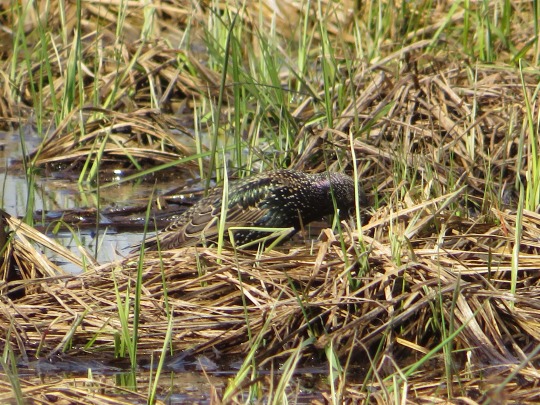


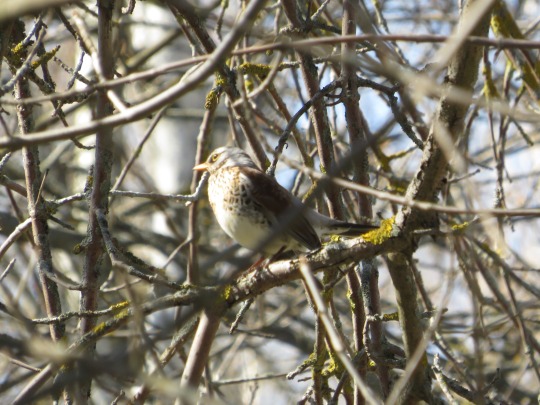



Amateur birdwatching in April.
1-2) Finches, male and female. 3) European greenfinch. 4-5) Starlings. 6) Wood warbler (Phylloscopus sibilatrix) . 7-11) Fieldfare (Turdus pilaris)
27 notes
·
View notes
Text

The Wood Warbler (Phylloscopus sibilatrix) is a common and widespread leaf warbler which breeds throughout northern and temperate Europe, and just into the extreme west of Asian Russia in the southern Ural Mountains.
This warbler is strongly migratory and the entire population winters in tropical Africa.
📸 by Jeff Sykes Photography (Jeff's Wildlife)
5 notes
·
View notes
Text

Wood Warbler
2 notes
·
View notes
Photo

wood warbler (Phylloscopus sibilatrix)
13 notes
·
View notes
Photo
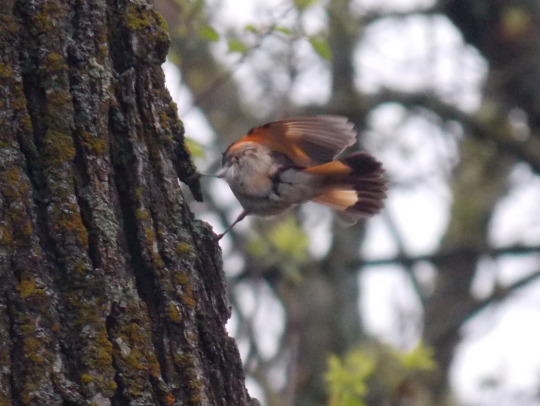
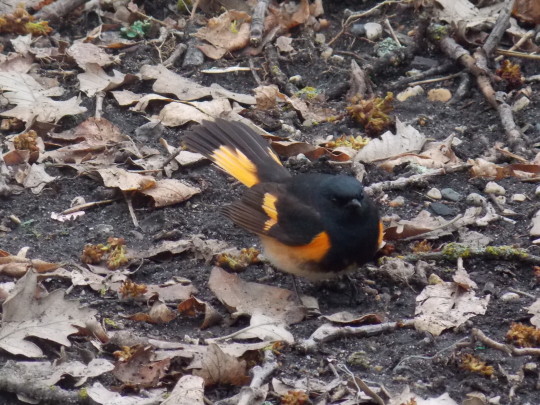

American Redstart, near Turtle Mountain provincial park, early June 2022.
This is a male American Redstart in late May / early June 2022. He keeps his tail fanned out as he searches for insects--supposedly the bright colour scares them out of hiding so he can catch them?
These birds would follow us when we'd hike. This is a strategy that some birds (especially insectivores) use: follow the large mammal, they're sure to attract insects! Good job, A+ birb, eat all the bugs.
#bird#birds#birb#American Redstart#warbler#wood warbler#spring bird migration 2022#summer birds 2022#camping 2022
10 notes
·
View notes
Text

Pink-headed Warbler (Cardellina versicolor), family Parulidae, order Passeriformes, found in far southern Mexico and Guatemala
photograph by Francesca Albini
#warbler#bird#parulidae#wood warbler#cardellina#passeriformes#ornithology#mexico#central america#animals#nature
1K notes
·
View notes
Text

Got a lot of love on some of my bird art recently, so posting some more here! <3
#elfinwoods warbler#warbler#bird illustration#puerto rican warbler#songbird#songbird art#elfin woods warbler#avianaugust2023#procreate#my art#birdwatching#birding
662 notes
·
View notes
Text
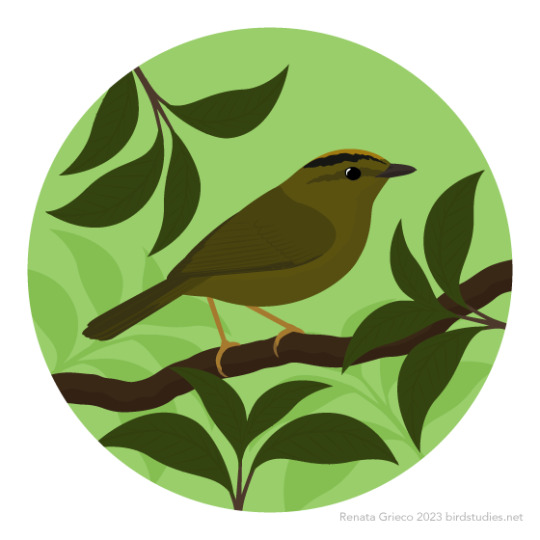
November 6, 2023 - Choco Warbler (Myiothlypis chlorophrys)
These warblers are found west of the Andes in and around lowland forests in parts of Colombia and Ecuador. Foraging in pairs or small flocks high in trees, often with other species, they probably feed primarily on invertebrates. Their breeding behavior is not well known, but adults have been observed carrying nesting materials in early October and late January and a pair feeding fledglings was seen in early June.
60 notes
·
View notes
Photo

This Wood Warbler ended up being the highlight of today. Over the last few years, this species has gone from an uncommon migrant to a real scarcity, even at migration hotspots like Spurn, and feels as special as a Pallas’s Warbler! Of course, this is hugely concerning - but it’s hard not to be delighted when one is feeding just in front of you!
The bird can be aged as a first-winter due to the uniformly fresh wings. Adults only moult partially before autumn migration, doing the body and sometimes tertials and inner greater coverts, or even a tail feather or two. But the rest of the plumage would be worn.
Adults and young birds undergo a complete moult in their wintering grounds in central Africa, meaning they can’t be aged when they return in the spring.
1 note
·
View note
Photo

A new variant has been added!
Wood Warbler (Phylloscopus sibilatrix)
© tomodachibirb
It hatches from common, distinctive, green, high, inconspicuous, leafy, migrant, pale, shady, silky, uncommon, white, and yellow eggs.
squawkoverflow - the ultimate bird collecting game
🥚 hatch ❤️ collect 🤝 connect
1 note
·
View note